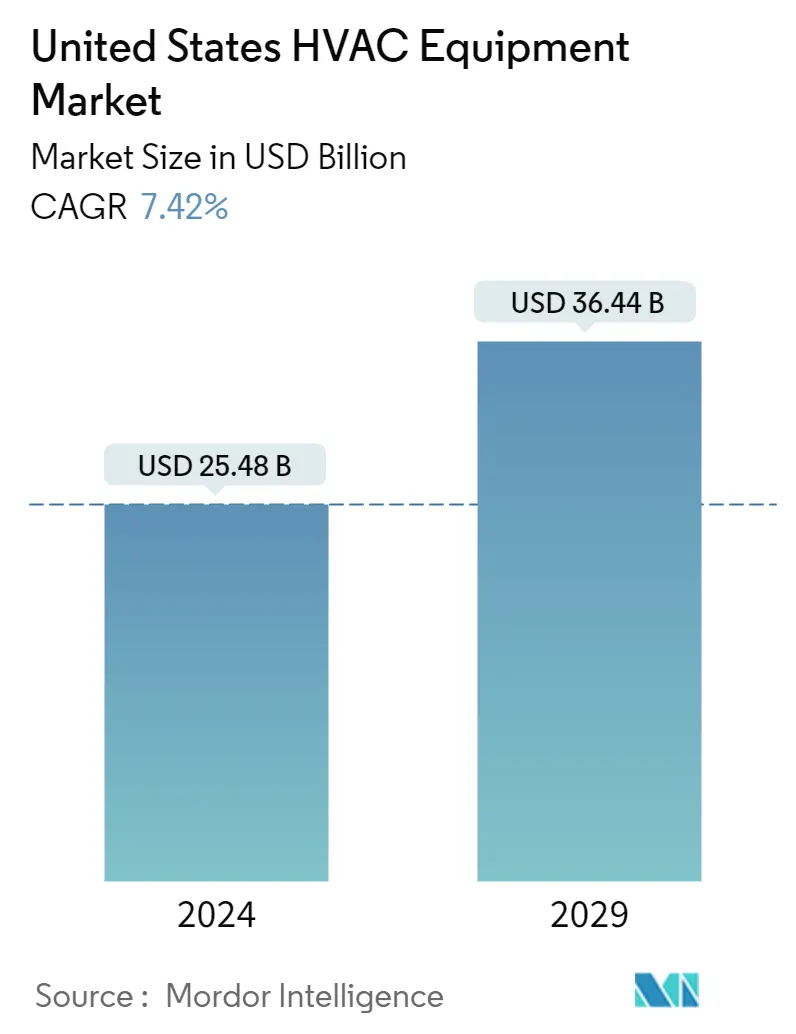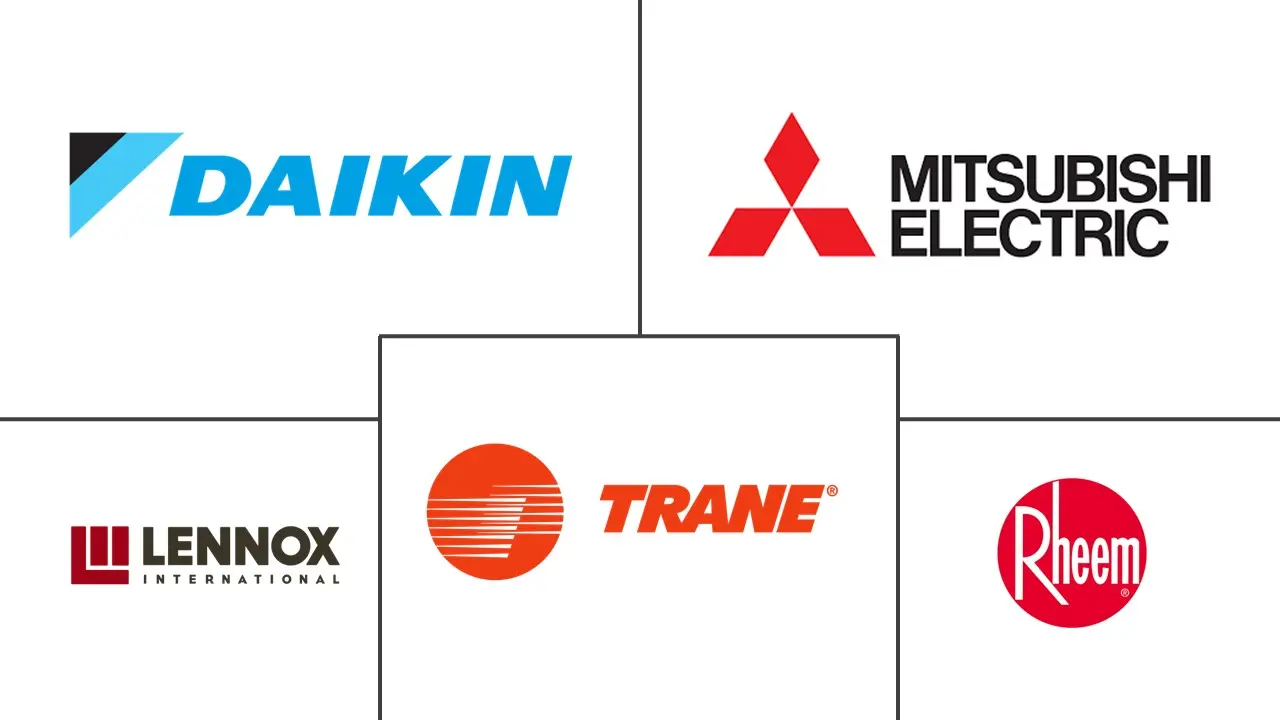Market Size of United States HVAC Equipment Industry

| Study Period | 2019 - 2029 |
| Base Year For Estimation | 2023 |
| Market Size (2024) | USD 25.48 Billion |
| Market Size (2029) | USD 36.44 Billion |
| CAGR (2024 - 2029) | 7.42 % |
| Market Concentration | Medium |
Major Players
*Disclaimer: Major Players sorted in no particular order |
Need a report that reflects how COVID-19 has impacted this market and its growth?
US HVAC Equipment Market Analysis
The United States HVAC Equipment Market size is estimated at USD 25.48 billion in 2024, and is expected to reach USD 36.44 billion by 2029, growing at a CAGR of 7.42% during the forecast period (2024-2029).
The growing use of natural refrigerants, combined with increased efforts by various governing bodies around the world to promote energy-efficient products, are expected to drive the growth of the HVAC Equipment Market.
- The changing climatic conditions are one of the major factors that facilitate the rise in demand for heating and cooling equipment, and this attribute fosters market growth. Furthermore, HVAC units increase the aesthetic value of residential and commercial properties, which is expected to drive market growth.
- In September 2021, Carrier Corporation announced the launch of a new line of TruVu Dual IP Advanced Application Controllers for the i-Vu building automation system. This helps to meet the demand for accurate, dependable automated control in the most challenging HVAC zone applications. These controllers have been designed to make installation as straightforward as possible while improving system control and monitoring.
- The growth in the construction industry and the rise in disposable income in developing countries have increased the requirement for HVAC equipment for a broader consumer base. According to the Bureau of Labor Statistics, the construction industry's business in the United States is expected to amount to almost USD 1.58 trillion by 2028.
- Moreover, according to a report from the US National Academy of Sciences (NAS), the first decade of the 21st century was 0.8°C (1.4°F) warmer than the first decade of the 20th century. The variation in climatic changes has led to the increasing demand for electrical cooling systems in summers and, simultaneously, for natural gas, heating oil, wood, and electrical heating systems in winters. Moreover, climate change harms energy consumption in buildings and influences air conditioning loads, which vary according to ambient temperature and humidity. With the advent of new government regulations, like in the US, HVAC systems' energy efficiency is expected to rise. This has opened a gateway to the smart HVAC control systems for the most advanced heating and air conditioning units in buildings.
- The demand for environmental control during this COVID-19 crisis significantly increased because air filtration, airflow, and humidity are all three critical components in minimizing the risk. Due to this, shutting down an HVAC system during a crisis such as this was not recommended. Filtration is essential in assuring indoor air quality (IAQ), because if the virus can be captured in the filtration system, it cannot make someone sick inside the building.
